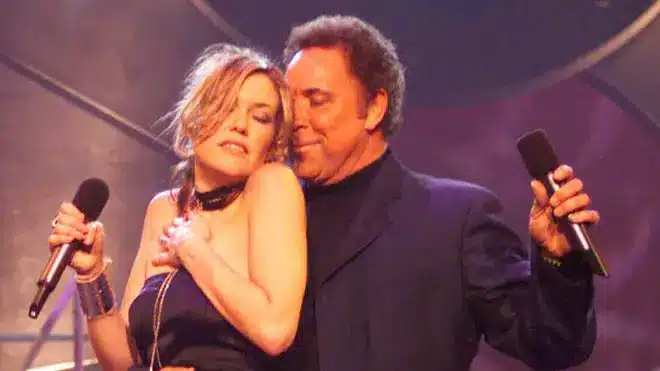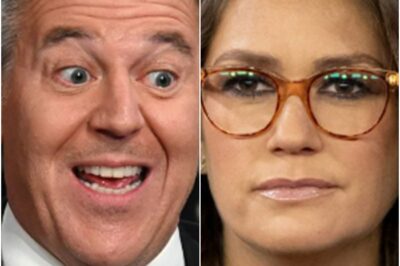
“Baby, It’s Cold Outside” has long been considered a Christmas classic, but in recent years, the song has faced scrutiny and sparked debate about its lyrics and their interpretation. In 2018, a radio station in Cleveland, Ohio, made the decision to remove the song from its playlist after receiving complaints from listeners who felt the song was inappropriate and contradictory to the values of the #MeToo movement.
The song, written by Frank Loesser in 1944, has been criticized for its lyrics, which depict a conversation where a man tries to persuade a woman to stay with him, even though she insists on leaving. Some listeners felt that the man’s behavior in the song came across as manipulative, particularly in light of the cultural shift toward more sensitive conversations about consent and respect following the #MeToo movement.

Despite these concerns, a poll conducted on the station’s Facebook page revealed that a majority of listeners did not want the song banned. Glenn Anderson, a host at the station, acknowledged that the song was written in a different time but still felt that the lyrics were “manipulative and wrong.” He argued that in today’s world, where the #MeToo movement has empowered women to speak out, the song doesn’t align with the values of mutual respect and consent.

The song has been covered by numerous artists, including Michael Bublé, James Taylor, Tom Jones, and Cerys Matthews, as well as in the movie Elf by Will Ferrell and Zooey Deschanel. The lyrics of “Baby, It’s Cold Outside” include lines like
“I simply must go (But baby it’s cold outside)
The answer is no (But baby it’s cold outside).”
One line in particular, “Say, what’s in this drink? (No cabs to be had out there),” has generated considerable controversy, with some listeners interpreting it as problematic, while others argue that it had a different, innocuous meaning in the 1930s, when the song was first written. Historically, “What’s in this drink?” was a common phrase used to explain a drink’s potency, rather than implying any sinister intent.
As debates continue over the song’s place in modern holiday playlists, it highlights the broader conversations surrounding consent, respect, and the evolution of cultural norms. Some may argue that it’s a harmless holiday classic, while others see it as a reminder of outdated gender dynamics that no longer reflect the values of today’s society.
News
Kat Timpf’s Jaw-Dropping Fox News Comeback: After Greg Gutfeld’s Heartfelt Announcement, Fans Go Wild—What Mysterious Secrets From Her Hiatus Will She Finally Unleash on Gutfeld! and The Five, and How Will Her Return Shake Things Up on the Show?
Kat Timpf’s Jaw-Dropping Fox News Comeback: Greg Gutfeld’s Teary Reveal Ignites Fan Frenzy—What Mysterious Hiatus Secrets Will She Unleash on…
In a SHOCKING FOX NEWS BLOWUP, Jessica Tarlov and Greg Gutfeld’s On-Air Fight Explodes Into Chaos—Producers Are Forced to Pull Her Off Stage as Cameras Continue Rolling, and What Was Said Will Leave Viewers Stunned and Speechless!
Viewers who tuned in to Fox News expecting another energetic debate on The Five got far more than they bargained for—an on-air confrontation…
Caught Between Shifting Alliances and Rising Tensions, Rachel Maddow’s Role at MSNBC Is Thrown Into Uncertainty as the Network’s New Leadership Unveils a Brutal Truth—Will Maddow’s Storied Prime-Time Legacy Survive the Storm?
MSNBC’s Crossroads: Rachel Maddow Faces Tensions as Network Shifts Course A storm is brewing behind closed doors at MSNBC, where…
In a Hilarious and Unforgettable Moment on The Voice UK, Olly Murs Teased Sir Tom Jones About His Iconic Hit “It’s Not Unusual”, Only for the 79-Year-Old Legend to Surprise Everyone With a Flawless Performance That Proved His Voice is Timeless
In a memorable segment on The Voice UK, Olly Murs quizzed Sir Tom Jones about his first hit “It’s Not…
André Rieu’s Son, Pierre, Reflects on the Unforgettable Warmth His Father Received in Malta, Revealing How He Was Moved by the Overwhelming Reception That Took Him Completely by Surprise
Aqra bil- Malti Love emanates from Maestro André Rieu’s orchestra. Right before his concert in Maastricht, TVMnews met two members of…
What Began as a Quiet Love Between Adam Lambert and Oliver Gliese Has Grown into a Powerful Symbol of Courage, Pride, and Resilience, As They Stand Strong Together in the Face of Homophobia and Public Backlash, Proving That True Love Can’t Be Broken
News that Adam Lambert was joining The Voice Australia as a coach in 2024 had his fans squee-ing with excitement. The former American…
End of content
No more pages to load












